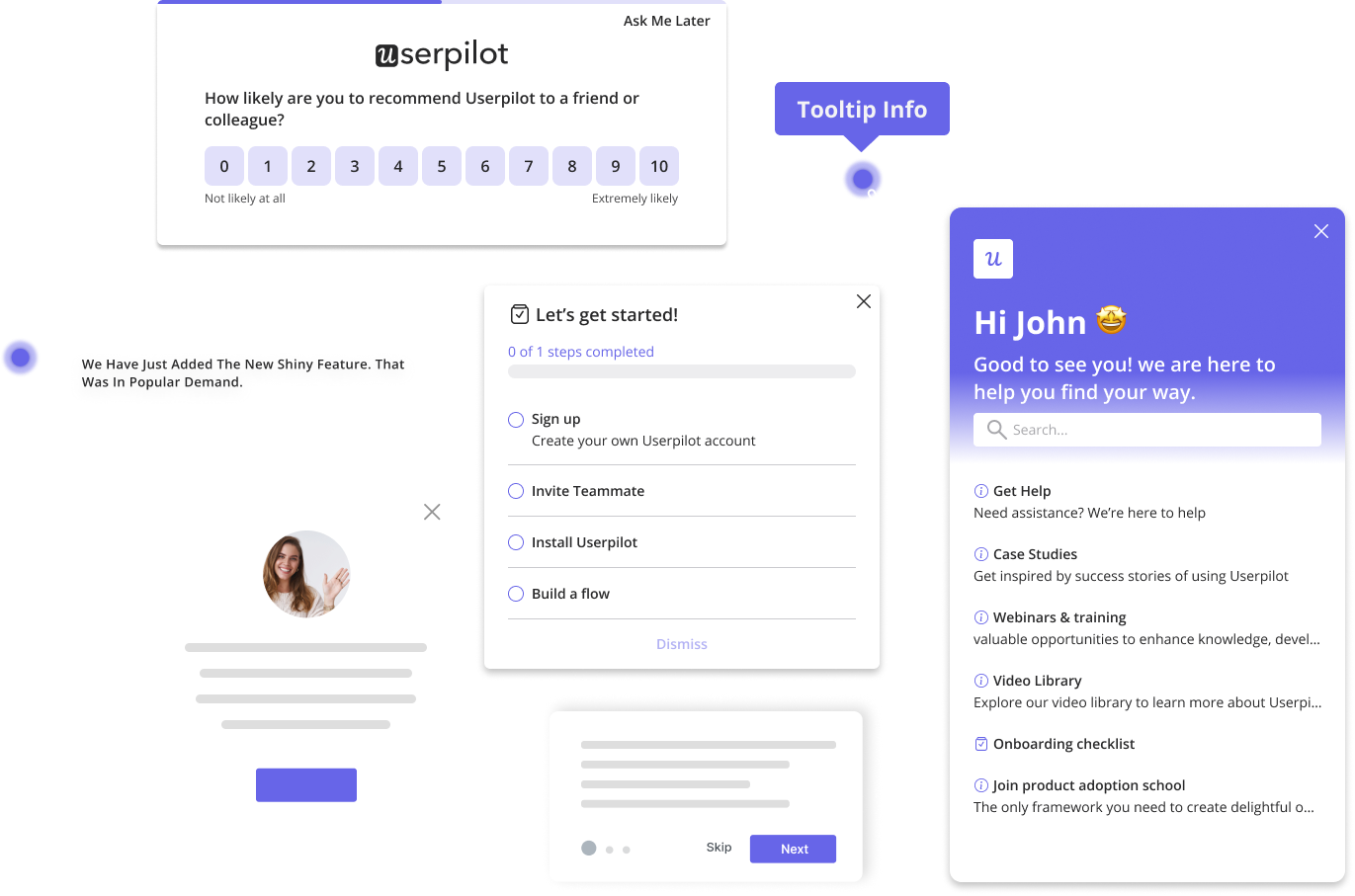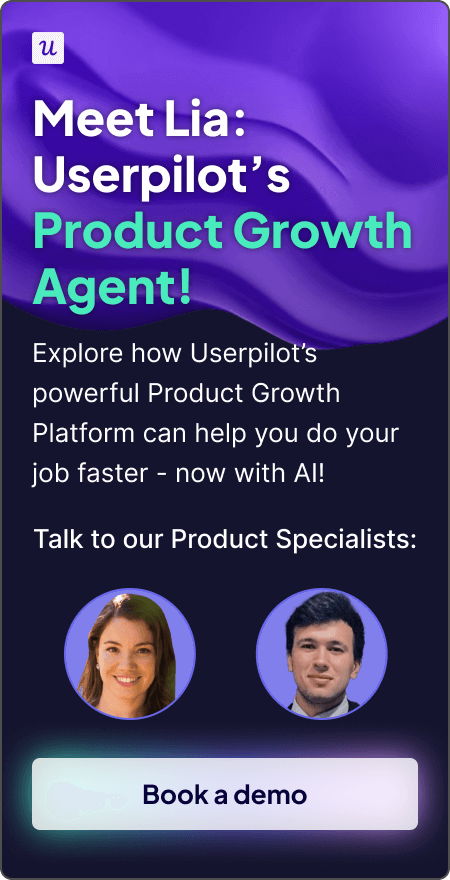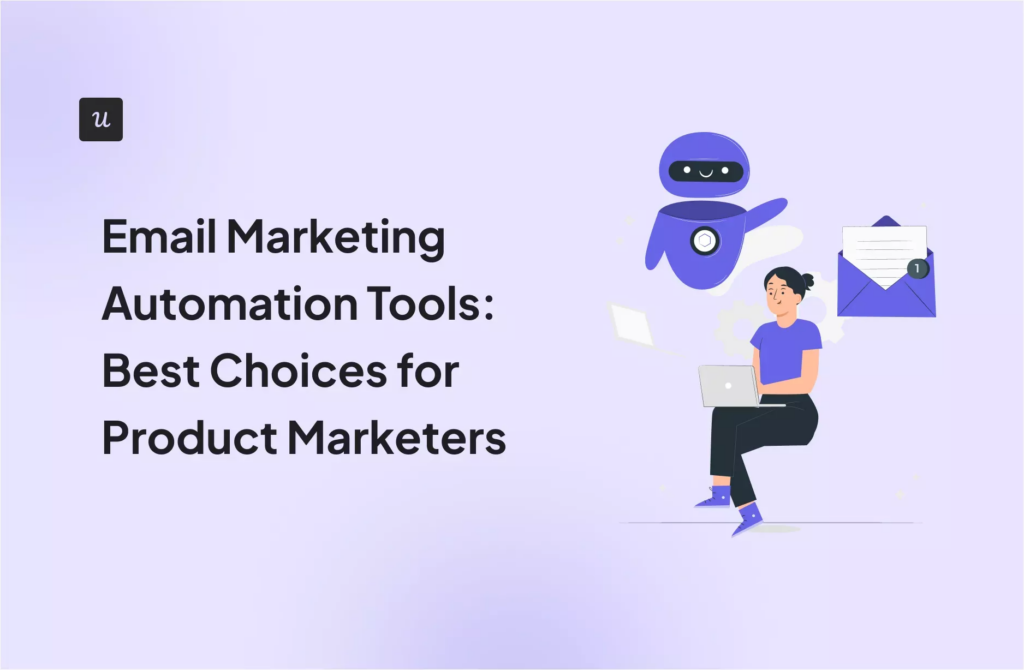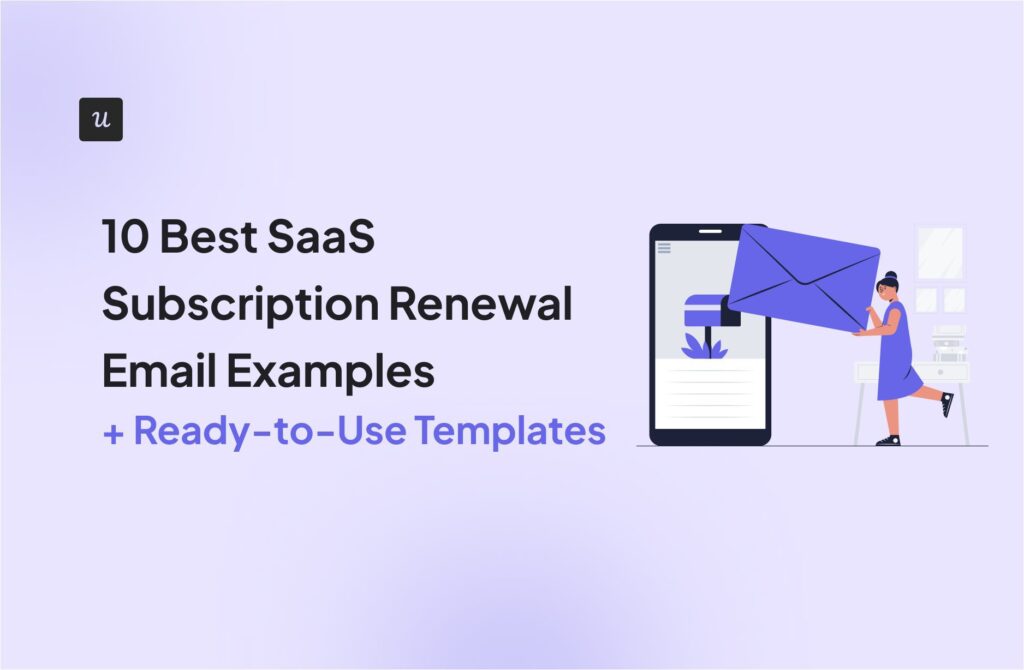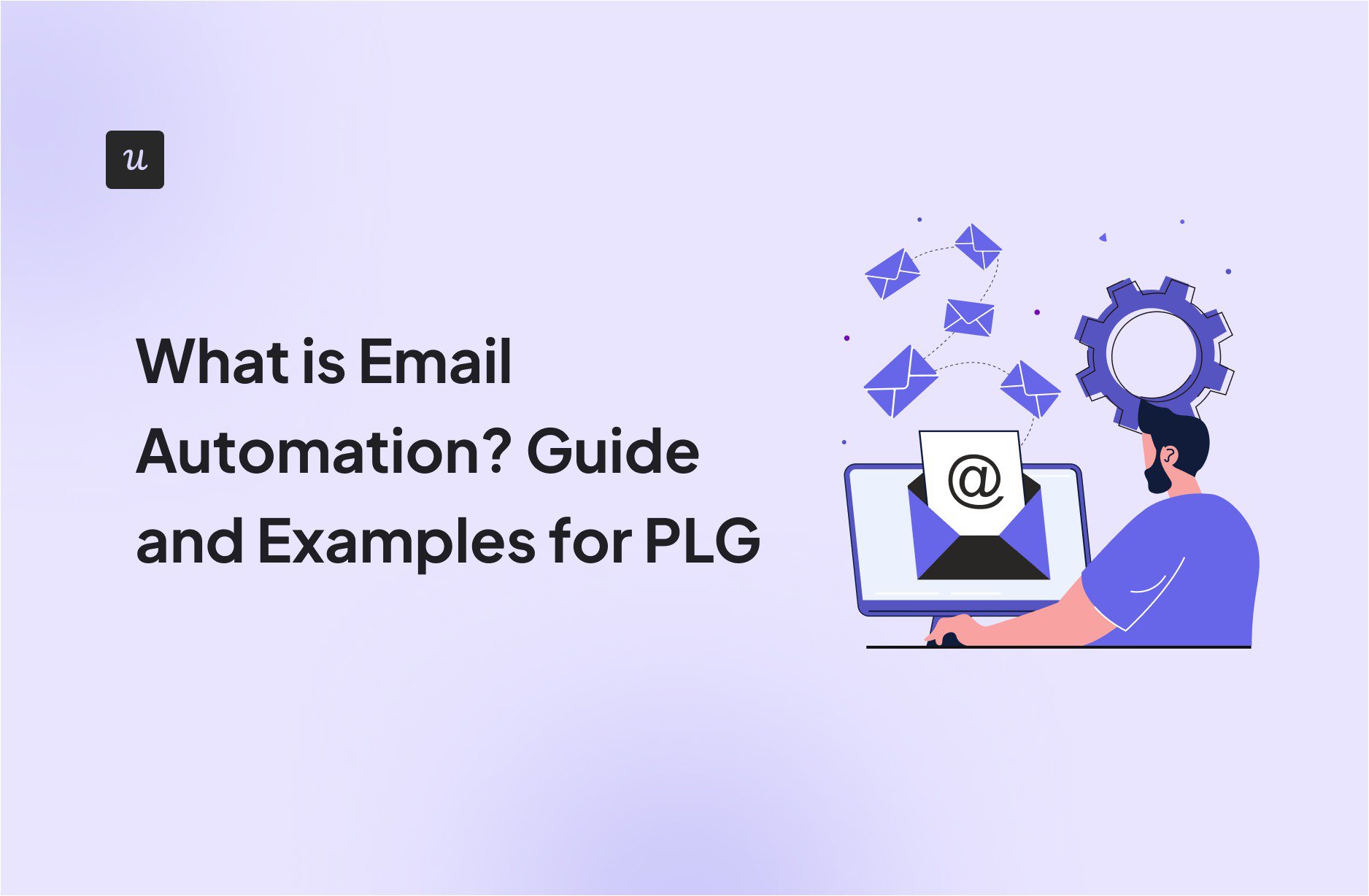
As a B2B SaaS marketer laser-focused on product-led growth, my primary objective is to get our platform in the hands of more users while ensuring they experience value fast. The process involves guiding users through distinct paths based on role, company context, and actual product interactions using emails or in-app guides.
However, manual email campaigns are challenging at scale, and generic email marketing often gets ignored (or worse, lands in spam, damaging your brand reputation).
Intelligent email automation solves both problems for product management teams. It delivers the right emails to the right people at the right time based on what users do inside your product.
In this article, I’ll talk about what email automation is, how it works, and examples from some of my favorite PLG-driven companies.
Instructions for WordPress:
1. Copy all the code below this comment.
2. Paste it into the ‘Text’ tab (not the ‘Visual’ tab) of your WordPress post or page editor.
3. Upload the ‘lead_gen_quiz.js’ file to your WordPress Media Library and get its URL.
4. Replace ‘YOUR_JAVASCRIPT_FILE_URL_HERE.js’.
Try Userpilot Now
See Why 1,000+ Teams Choose Userpilot
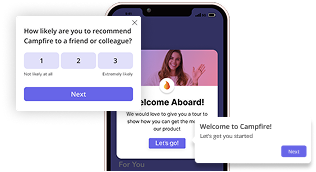
What is email automation?
Email automation is the process of sending emails based on triggers, schedules, or customer data using an email marketing tool. For instance, when someone completes their first project, they receive tips about advanced features. Or when they haven’t logged in for a week, they get re-engagement content highlighting recent updates.
Email automation goes far beyond bulk, generic marketing campaigns. It helps create a personalized experience that adapts to each user’s actions.
This personalization is especially critical for PLG-led companies, where all campaigns must be rooted in in-app behaviors. You also need to know what users are actually doing inside your product and be able to leverage that information for your campaigns.
In my day-to-day practice, I start with JTBD-based sequences combining emails with in-product “bumpers” like modals, informational tooltips, and checklists. Push notifications and emails also work together to guide users toward their ‘Aha!’ moment while they are not engaged with your app.
Each touchpoint in these automated workflows triggers based on how users interact with both the product and previous communications. An email marketing automation software is the only practical way to make this work at scale.
What are the benefits of email automation?
For those of us focused on product-led growth marketing, personalized email automation delivers three advantages that traditional email marketing efforts can’t match.
- Individualized customer journey based on user behavior: With automation, you can create marketing emails based on user data like lifecycle stage and what users actually do inside the product. For instance, if someone views a feature page three times but never activates it, they automatically get targeted guidance for that specific capability. Or if they hit usage limits, they receive upgrade prompts showing exactly how much storage they’ve consumed. This specificity drives customer engagement far more effectively than demographic segmentation alone, improving the overall customer experience through Userpilot’s content personalization.
- Reach thousands without scaling headcount: Consider what manual follow-ups to thousands of users based on individual in-app actions would require: you’d need a team monitoring customer behavior constantly and crafting appropriate responses. But with a marketing platform, I can build the logic once, and it runs continuously, so my team onboards, nurtures, and re-engages our entire user base while focusing human effort on strategy and optimization rather than execution.
- Prevent churn before it happens: Users who haven’t logged in for two weeks are significantly more likely to cancel than those with consistent usage. Automated campaigns allow me to intervene at that exact moment with re-engagement content. I set up campaigns to celebrate milestones, automatically reinforcing value and reminding trial users about unexplored features. The automated workflows run continuously, catching at-risk users before they leave, directly impacting our churn rate.
How to set up an effective email marketing automation strategy
An effective automated email marketing strategy is one that considers what users are actually trying to accomplish right now and always remains one step ahead.
Here’s how I create effective automation campaigns.
1. Map user journeys and identify engagement points
Before writing any email, we systematically map the customer journey. Where do users start? What are their ‘Aha!’ moments? Where do they get stuck?
In my team, we track activation metrics and look for drop-off points in conversion funnels within Userpilot analytics. This data tells us exactly where email automation can have the biggest impact.
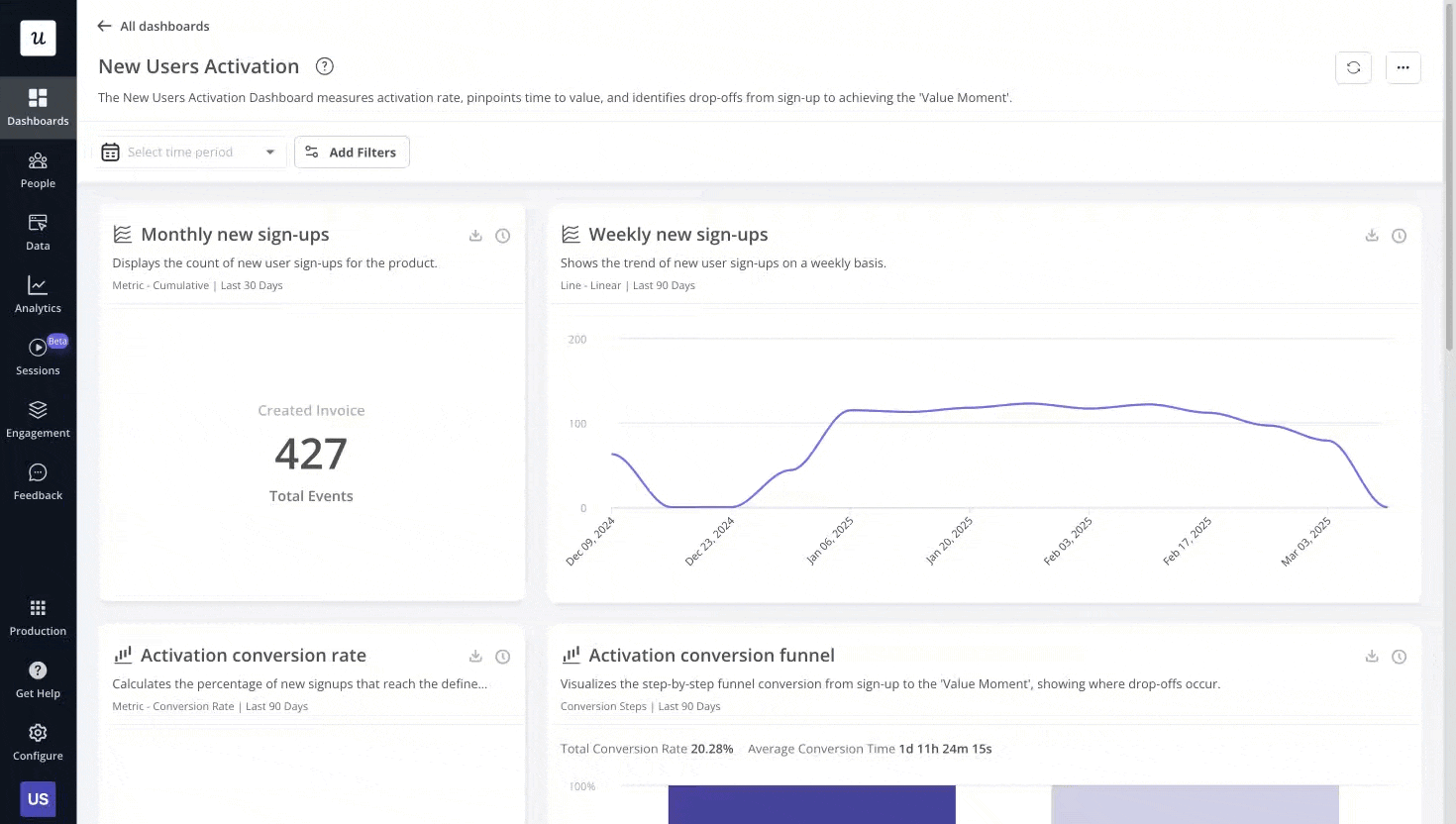
Mapping isn’t one-and-done work (as much as we’d all like it). As your product changes and you receive more behavioral data through site tracking, you’ll refine your understanding of successful versus unsuccessful paths.
2. Segment audiences for hyper-personalization
We use customer segmentation to group users by behavior, demographics, and product usage. Thanks to that, we’re able to create highly relevant messages. For instance, a trial user exploring the product needs completely different guidance than a six-month power user or existing customer who’s already achieved their goals.
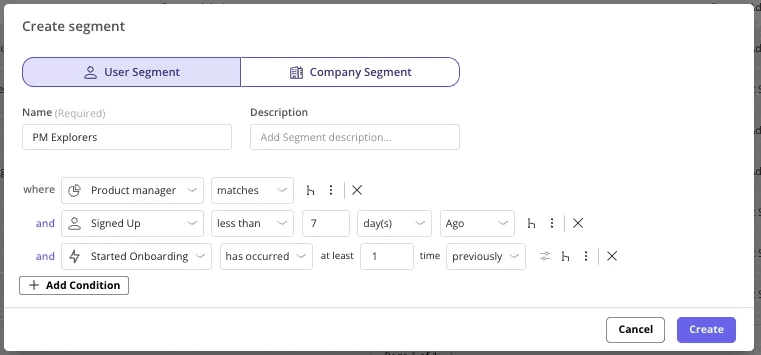
Good email marketing automation tools like Userpilot also support dynamic content blocks. You can personalize entire sections like your signature or workflow instructions, without creating entirely separate campaigns.
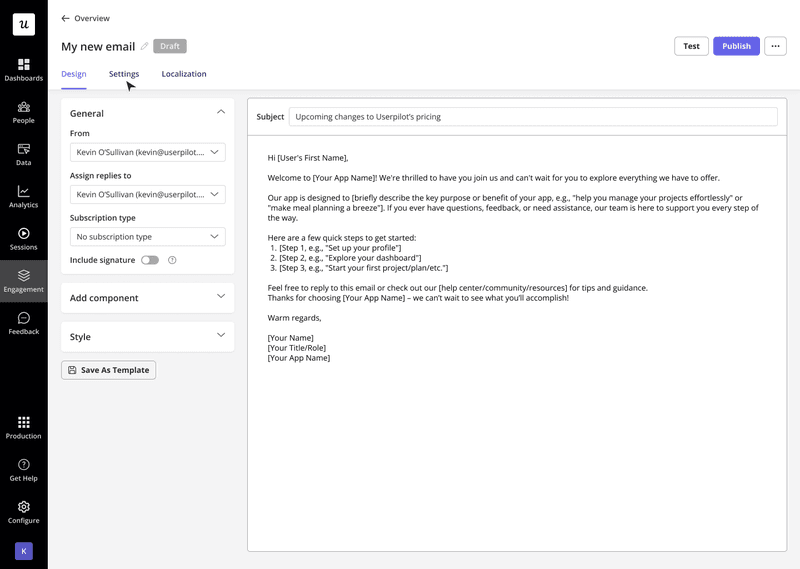
3. Design omnichannel communication journeys
Knowing who we’re addressing dictates what to communicate and where. Emails are indispensable for three scenarios: welcoming new customers and setting expectations, re-engaging users who’ve become less active, and passing transactional messages about time-sensitive actions like trial expiration. And they’re most effective when they complement real-time in-app communication.
This creates an omnichannel customer experience where each channel reinforces the others. For SaaS companies, this coordination helps maintain engagement across touchpoints.
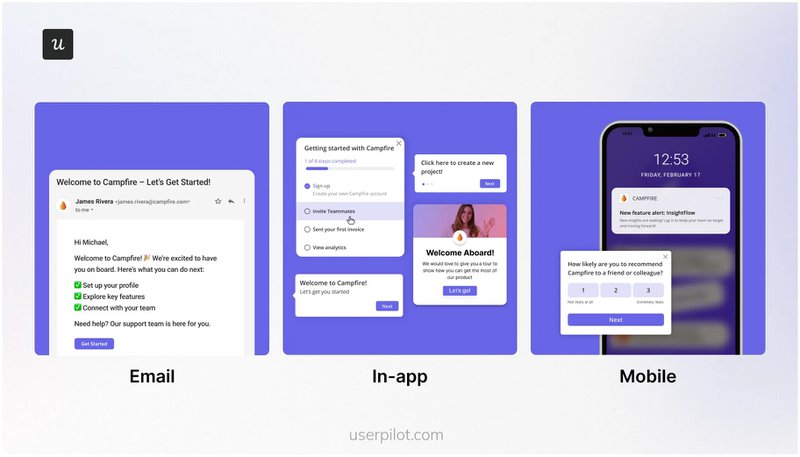
For instance, when someone completes a checklist task, a user engagement platform can trigger an immediate in-app congratulations message (instant positive reinforcement) followed by an email a few hours later with the next steps they can review on their own time.
Userpilot’s AI Assistant drafts the copy for these messages, maintaining consistency across channels while saving hours of manual writing. This even extends to multi-page flows with seamless page changes.
4. Set up triggers, audience, goals, and frequency
To ensure each message appears to the correct audience at the correct moment, you need to set it up just right. With Userpilot, you can customize the following settings:
- Triggers determine when emails are sent: time-based (three days after signup), behavior-based (user completed first project), or condition-based (trial expiring in 48 hours). The best triggers respond to meaningful moments rather than arbitrary intervals.
- Audience specifies who receives each email. Rather than blasting your entire list, target the segments that will find each message genuinely relevant. For example, I might send a feature adoption email only to users who’ve been active for more than two weeks but haven’t used that particular capability.
- Goals define the success of your email campaign. Every automated email needs a clear, measurable objective: drive a specific in-app action, increase feature adoption by a target percentage, or re-activate dormant users. Without defined goals, you’re just sending messages for the sake of it.
- Frequency is how often users receive messages. I implement caps to prevent our users from getting overwhelmed with too many emails in a short period. This cap includes both individual campaign frequency and total volume across all campaigns.
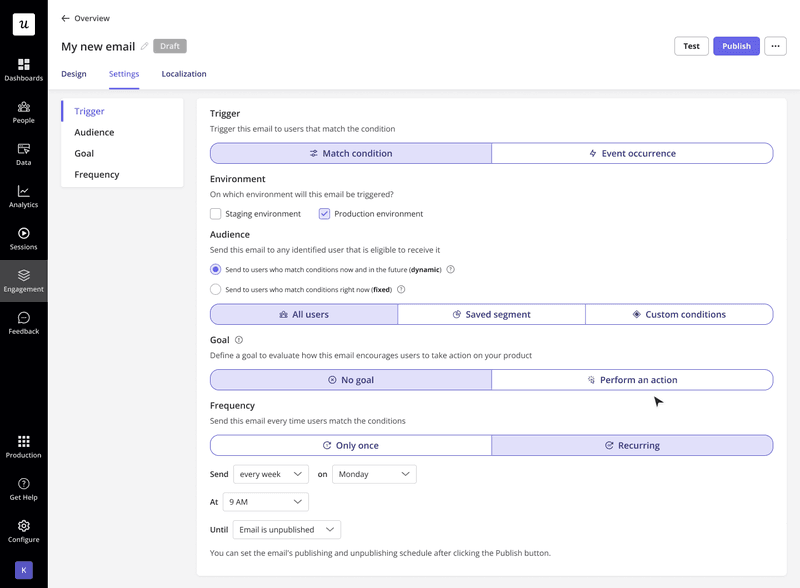
5. Continuously test, analyze, and optimize
Launching your automation workflows is just the start. My team constantly monitors open rates to test subject lines, click-through rates to gauge content relevance, and conversion rates to measure whether emails drive the desired actions. But I don’t stop at email metrics. The real question is whether campaigns improve product engagement and business outcomes.
Userpilot’s product analytics dashboards, including user activation and user retention dashboards, connect email performance to actual product usage.
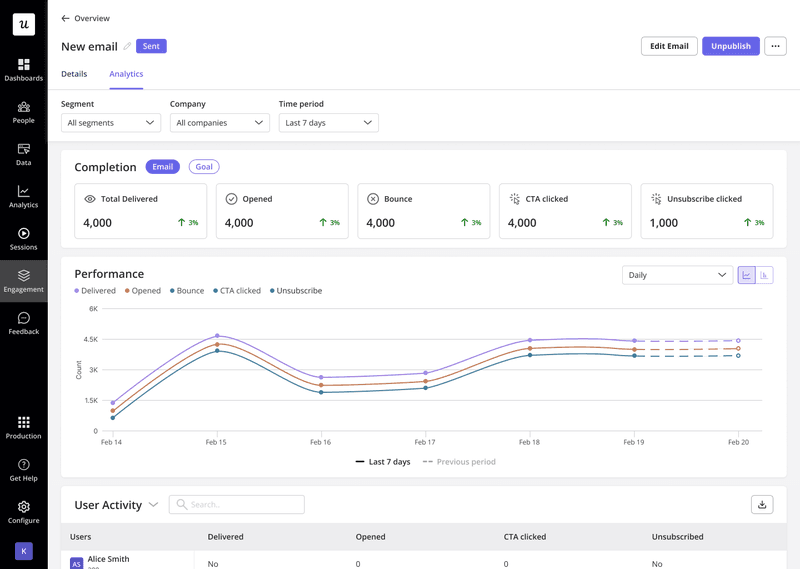
The platform lets me correlate email metrics with product metrics directly. For example, I may discover that users who engage with our week-two onboarding email are 3x more likely to reach activation, while a specific re-engagement campaign increases subscription renewal probability by 27%.
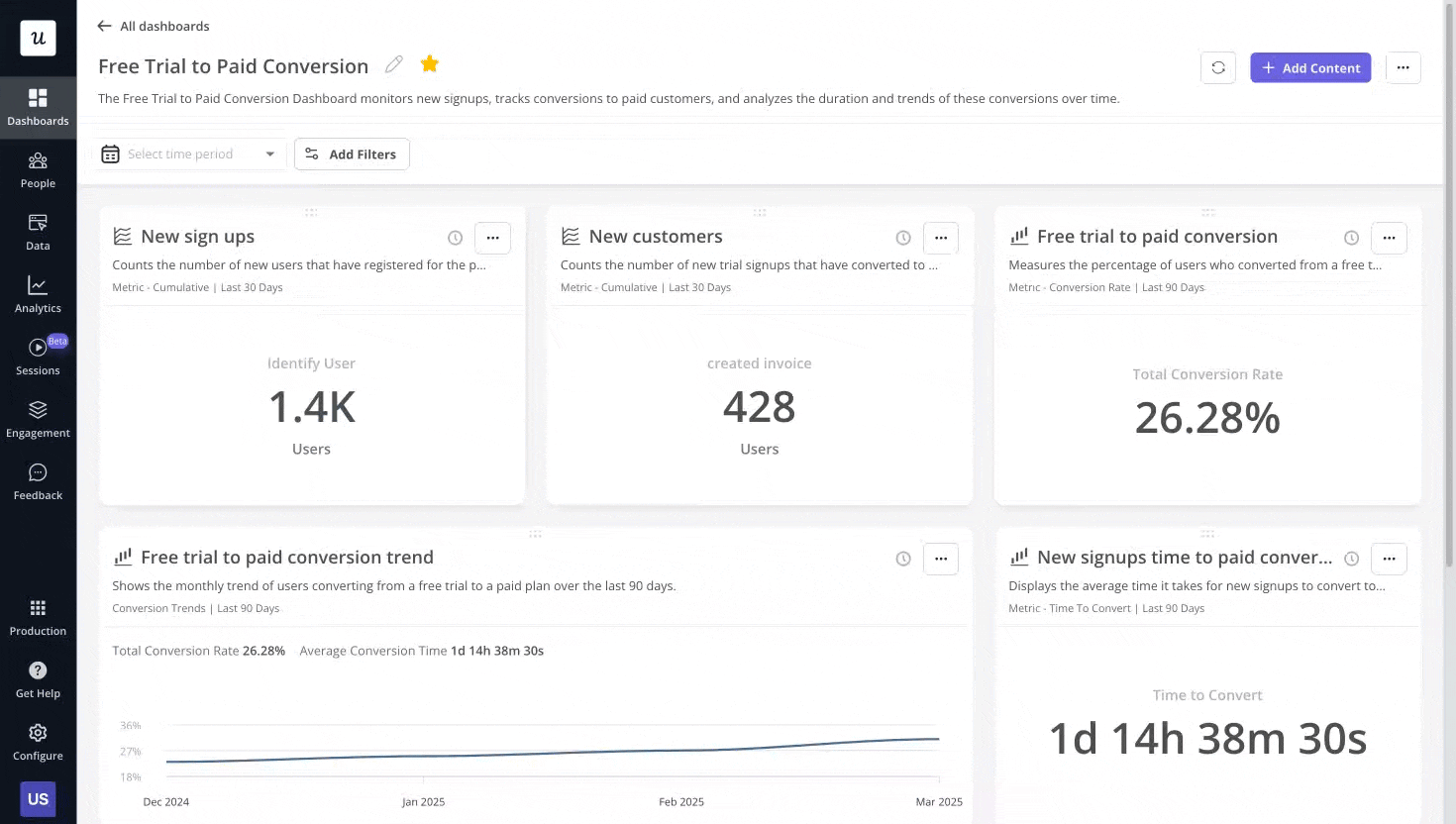
Common email automation examples and types
The most effective email workflows for SaaS companies are specific and targeted. Let me show you some proven email marketing examples.
1. Onboard users with a welcome email
When new users sign up, their interest peaks. A well-crafted welcome message is essential: a sequence that introduces our brand, highlights initial value, and guides them to their aha moment. Here’s what such an email can include:
- A warm welcome: Confirm signup and set clear expectations for what’s next.
- Highlight of a core feature: Based on initial actions, direct them to a useful feature, perhaps with an interactive walkthrough.
- Timely help and resources: Direct users to our knowledge base or provide quick tips to overcome common friction. An in-app resource center can host these resources, too.
We integrate personalized in-app experiences (built with Userpilot) directly with email automation to create seamless, impactful follow-up journeys.
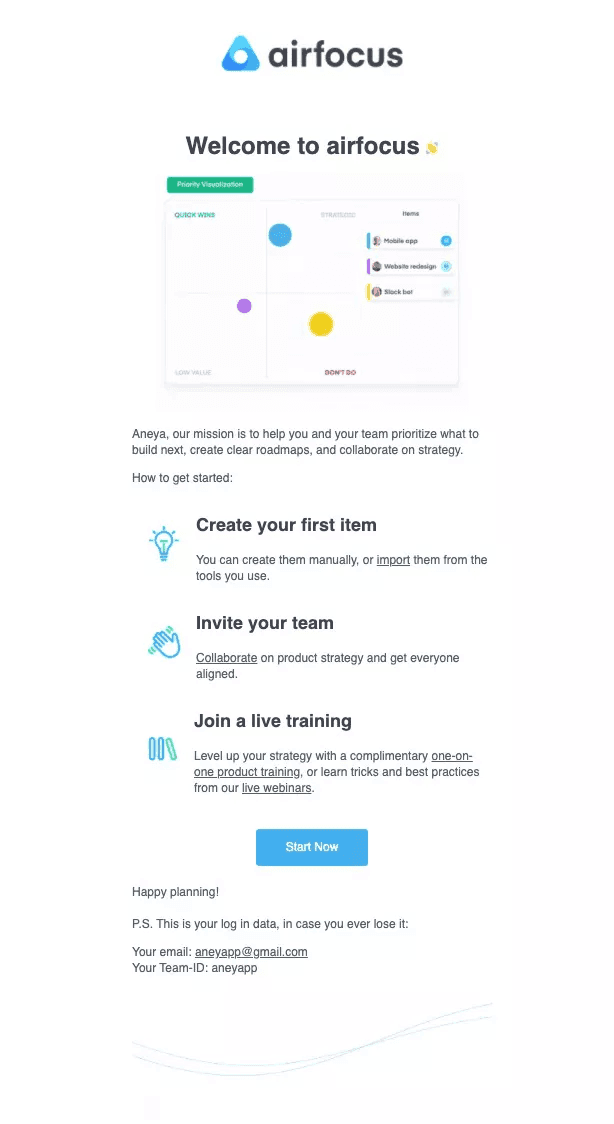
Airfocus gets the three things right: it personalizes the email, it breaks onboarding into three sequenced actions, and despite linking to multiple resources, it has one primary CTA. Many welcome emails either overwhelm with options or provide too few resources. This email checks all the boxes!
2. Drive feature adoption through nudges
Feature adoption emails introduce new capabilities. They educate you about advanced features you likely excluded from initial onboarding, or resurface powerful functionalities users might have forgotten.
I use product analytics to identify which features correlate with retention, then send targeted emails to users who would benefit but haven’t adopted them yet.
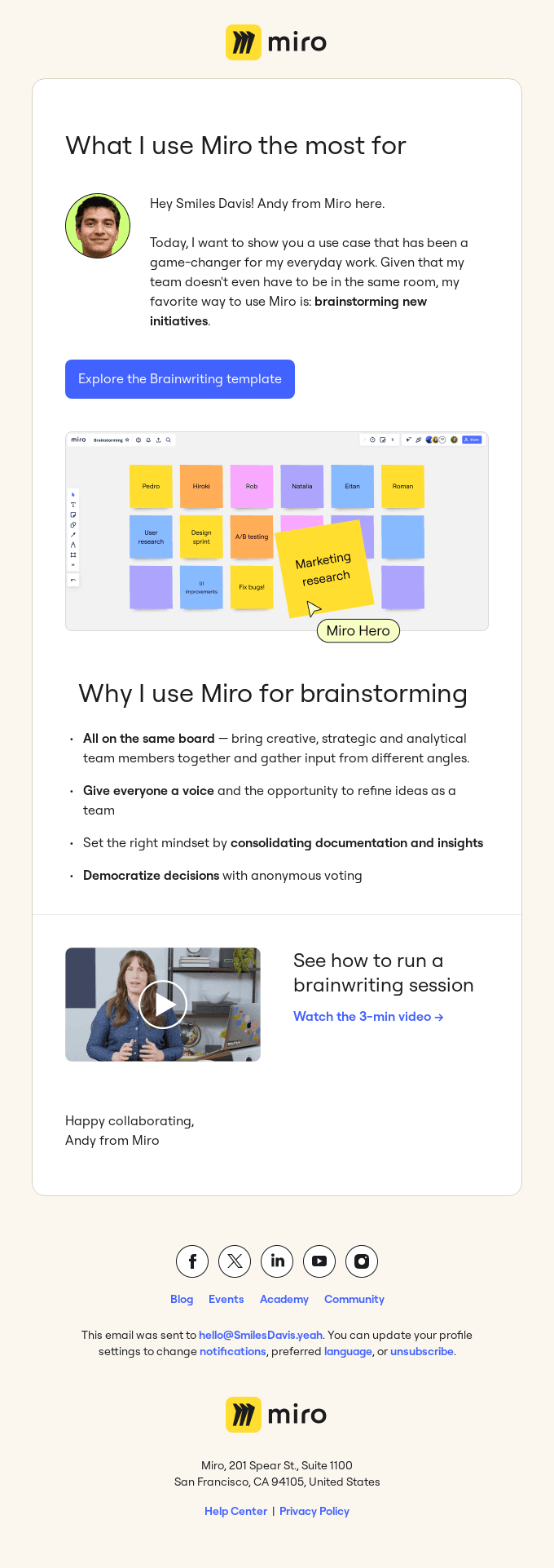
Miro nails use case-specific targeting. The email comes from a real person addressing a specific pain point marketing team leaders face: brainstorming with remote teams.
Rather than listing generic features, it frames the brainwriting template as a solution to an actual workflow problem. The email includes both a clear CTA to explore the free templates and supplementary educational content (the video tutorial and bullet points explaining benefits), giving recipients multiple entry points based on their learning preferences.
3. Re-engage lapsing users
It’s much harder to get new users than to retain existing ones. To prevent users from churning, I start with identifying users who haven’t logged in recently, stopped using core features, or show declining usage patterns. Then, I’ll reach out via push notifications or emails before they decide to leave.
Effective re-engagement emails remind users of the value they’ve already received using their actual usage data and highlight recent improvements that address any common pain points.
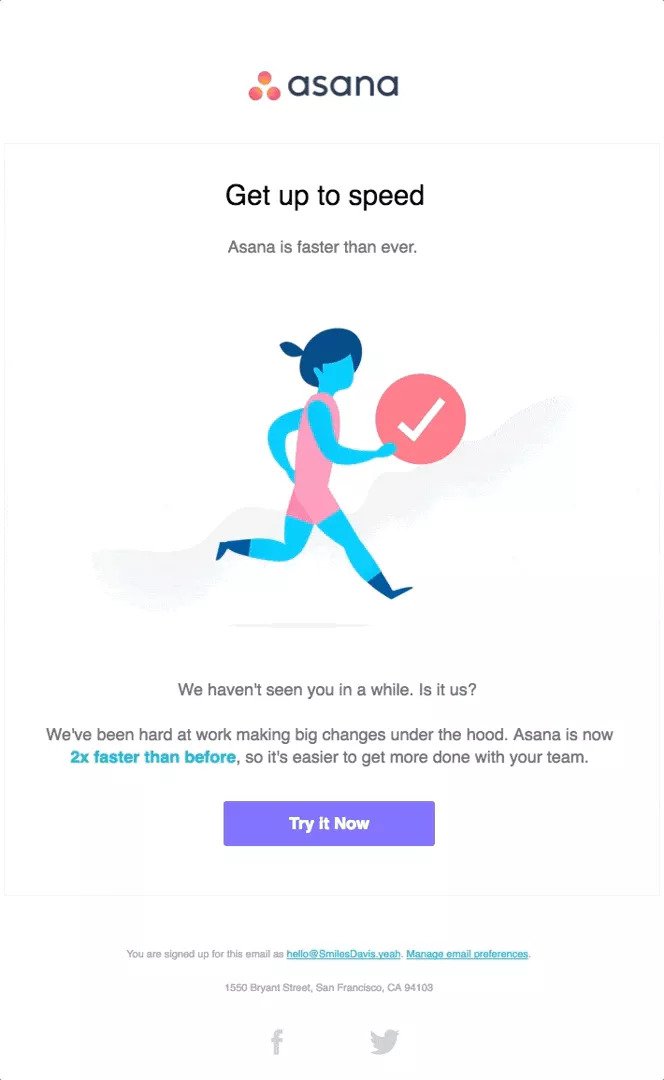
The headline “Asana is faster than ever” and the quantified claim “2x faster than before” directly speak to the pain point that a generic “we miss you” would not capture. Unlike many enterprise companies, it uses a friendly tone (“We haven’t seen you in a while. Is it us?”), acknowledging the absence. And what I like best is that it has only a single “Try It Now” CTA, making the ask clear to users.
4. Trial expiry and plan renewal reminders
Transactional emails remind users about expiring plans, upcoming renewals, or upgrade opportunities at exactly the right moment.
My most effective upgrade prompts trigger when users consistently bump against limits: hitting project maximums, running out of storage, or maxing out team seats. For e-commerce, similar browse abandonment emails recover revenue when shoppers leave without completing a purchase.
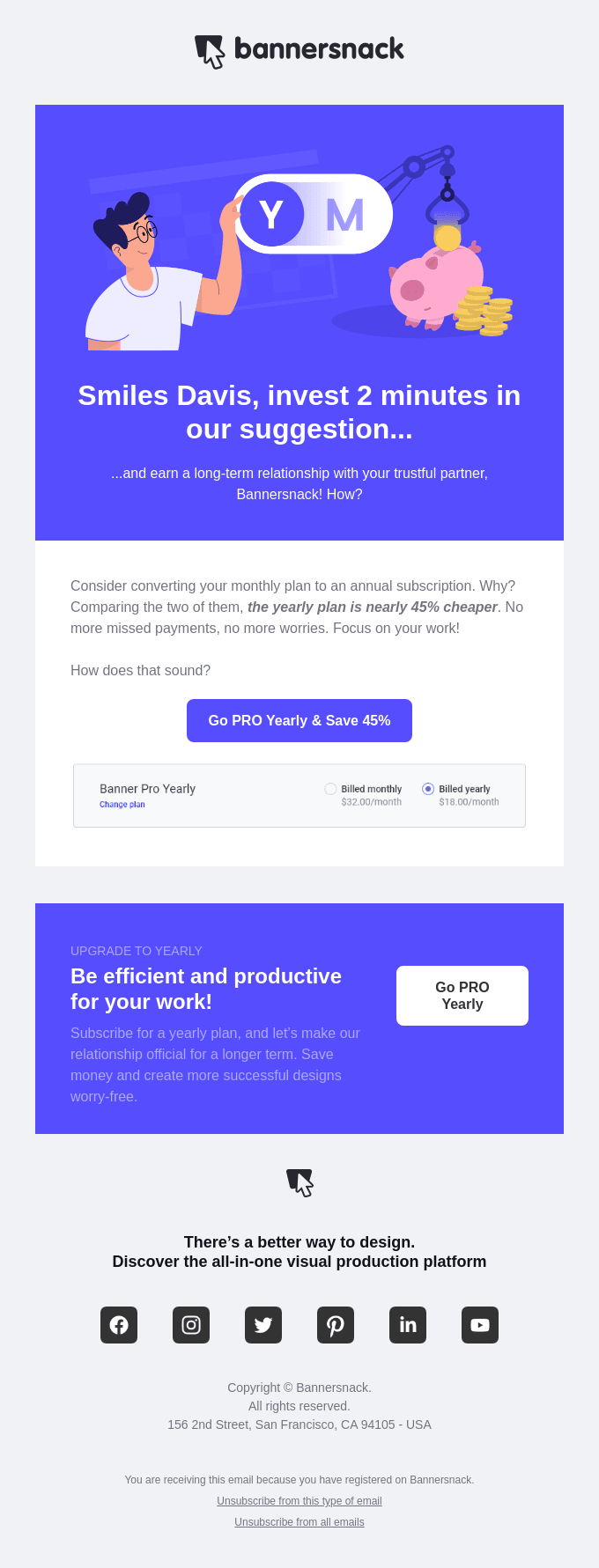
Bannersnack presents clear value backed by the user’s actual usage habits. Instead of generic “upgrade to get more features” messaging, it shows exactly how much money they’ll save with annual billing and frames it around their specific problems: “No more missed payments, no more worries. Focus on your work!”
5. Celebration and milestone emails
Automated messages celebrating birthdays, work anniversaries, or account milestones build strong relationships. I also send monthly summaries of what users accomplished with the product, highlighting progress toward goals and celebrating usage milestones. Following up with a thank-you email after major achievements reinforces positive behavior.
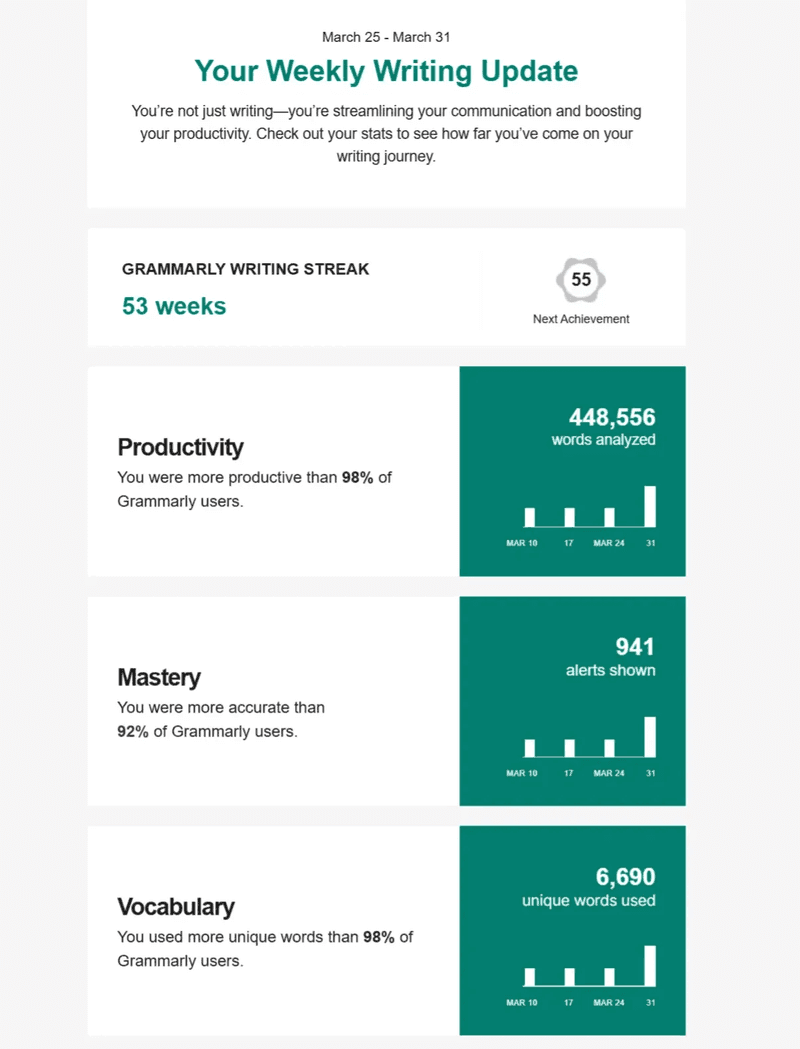
Grammarly gamifies product usage by comparing your statistics to others (“more productive than 98% of Grammarly users”) using concrete stats (448,556 words analyzed). The email demonstrates value delivered rather than asking for something, which is why users (including me) actually look forward to receiving it.
Master PLG with integrated automation
The right email automation platform is critical, but its true power unfolds when paired with a powerful product growth platform like Userpilot. This combination enables us to:
- Deliver contextual email marketing based on real-time behavior.
- Provide comprehensive in-app guidance to enhance customer experience.
- Continuously optimize strategies with actionable data.
Email automation, executed intelligently and supported by a robust platform, creates stronger customer relationships, accelerates product adoption, and directly drives SaaS growth. This empowers us to dedicate less time to repetitive tasks and more to ensuring our product delivers exceptional value to every user.
If you’re ready to try out automating your product communication with Userpilot, sign up for a free trial.
FAQ
What is the difference between email automation and email marketing automation?
“Email automation” refers to the technical capability of sending automated emails based on triggers or schedules. “Email marketing automation” is broader, covering segmentation, personalized messages, analytics, and integration with your overall strategy. In B2B SaaS, people usually mean the strategic, comprehensive approach when discussing email automation.
What are the best email automation tools?
The right automation software depends on your needs and how you want to integrate email with other channels. Userpilot works particularly well for product-led growth companies because it unifies email automation with in-app messaging, user onboarding flows, and product analytics in a single platform. Customer.io excels for teams with technical resources who want maximum flexibility and complex workflows. Braze serves enterprise companies orchestrating communication across multiple channels at massive scale.
What's the difference between automated emails vs. bulk emails vs. drip campaigns?
Bulk emails send the same message to everyone simultaneously, working for announcements but lacking personalization. Drip campaigns send a predetermined sequence at fixed intervals regardless of user behavior. Automated emails adapt dynamically: If someone completes the desired action after email 2, they don’t receive email 3. This behavior-responsive approach consistently outperforms static drip campaigns.
How do I ensure the deliverability of my automated emails and keep them from going to spam folders?
- Configure SPF, DKIM, and DMARC records for your sending domain to prove your email messages are legitimate.
- Maintain a good sender reputation by sending emails only to engaged subscribers, honoring unsubscribe requests, and avoiding sudden volume spikes.
- Focus on engagement signals like open rates and click-through rates.
- Regularly clean your list to remove unengaged subscribers. Most established platforms handle technical infrastructure automatically, but content quality and list hygiene remain your responsibility.

